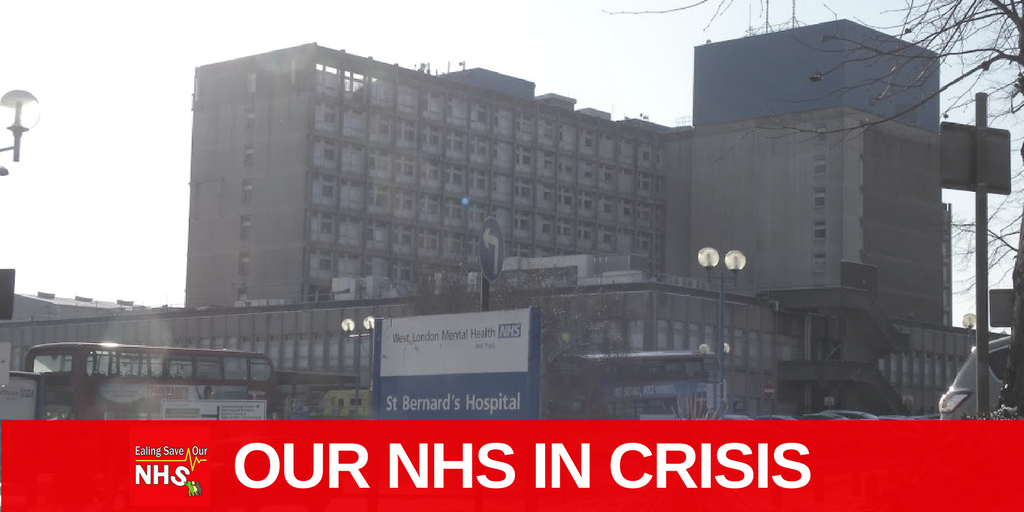SOCIAL CARE IN CRISIS
There is no clear sign that the crisis in social care will end any time soon. There has been lots of talk for years about changes/improvements but no recently implemented Acts of Parliament, sustainable policy changes or even large amounts of cash thrown at the problem. In 2014 Parliament passed legislation to cap the cost of personal care for older people and then it postponed its implementation indefinitely. The various unkept Government promises about publishing a Social Care Green Paper are quite pathetic. It was announced some two years ago and its appearance has been postponed six times. Prime Minister Johnson has said he wants a year to think about it. Even re-naming the Department of Health by tagging on Social Care has made little difference. All the nonsense about integrating healthcare and social care always comes with an NHS healthcare label on it with social cares just tagged on as an afterthought. As has been pointed out before, the irony of this of course is that in terms of beds and staff, social care is a bigger operation than healthcare!
In December 2019 the Government announced an additional £1 billion (or was it £1.5 billion?) for social care in 2020/21. A veritable drop in the ocean. Of course Local Authorities can increase Council Tax bills by 2% and the money be ring fenced for social care. If they all did this it would raise £500 million – yet another teardrop of help.
The Crisis – Facts and Estimates
+ Since 2010, £7.7 billion has been cut from adult social care budgets (Association of Directors of Adult Social Services – ADASS)
+ £700 million social care cuts in 2019/20 (ADASS)
+ 627,000 people refused social care March 2017 – January 2019 (AgeUK)
+ 1.4+ million older people with unmet social care needs (AgeUK February 2019)
+ 54,000 elderly people have died in England since March 2017 waiting for a social care package (AgeUK February 2019)
+ 5.3 million people over 75 years of age (Centre for Policy Studies 2019)
+ Children in Care – 28% Rise since 2009. 78,150 in 2019, 60,900 in 2009 (Local Government Association – LGA)
+ Children’s services facing £3.1 billion funding gap by 2025 (LGA January 2019)
+ 143,000 older people face catastrophic lifetime costs of £100,000 or more (Independent Age report April 2019)
+ £21.3 billion annual social care spend in 2018/19 (Institute of Fiscal Studies). Total annual healthcare spend in 2018/19 was £129 billion (fullfacts.org)
+ 122,000 current vacancies in social care (Workforce Intelligence October 2019)
+ 24% of care workers on Zero Hours contracts (Skills for Care September 2017)
+ 84% of care home beds are owned by private companies. Just 3% are provided by Local Authorities
+ In 2015, Delayed Transfers of Care (‘bed-blocking’) caused by social care difficulties amounted to some 600,000 hospital bed days (National Audit Office 2016)
+ 100,000 of the 1.4 million social care workforce comes from the European Union (EU). Brexit could make it harder to recruit EU nationals (AgeUK February 2019)
+ 18,500 employing organisations in social care (Skills for Care)
+ Estimated additional social care staff needed by 2035 is 580,000 (LGA)
+ 64.8% of the nation’s population live in an area where there is no community care legal aid provider (Legal Aid Agency).
Cost to Fix the Problems?
Introducing free personal care could cost £17 billion/year (Institute for Public Policy Research -IPPR -report May 2019).
Full funding of long term social care could cost £11 billion/year (Policy Exchange report June 2019).
75,000 extra care home beds could be provided by the State at a cost of £7.5 billion by 2030 (IPPR September 2019).
Barriers to Progress
Brexit will, yet again, dominate Parliamentary business in 2020 as we rush to cram many years work into 12 months to ’secure’ Brexit.
Unless the Government somehow runs healthcare and social care through the same business model the mismatch – on so many levels – between NHS Trusts and Local Authorities will continue.
The introduction of Integrated Care Systems (ICSs) in April 2020 in some parts of the UK and even more in other parts in April 2021 will eventually create 44 new ICS bureaucracies. The reduction in the number of CCGs from 191 to 44 by April 2021 will create its own turbulence. Who knows how the mega ICSs and mega CCGs will work together and whether social care services will improve or degrade in this ‘big is beautiful’ scenario?
In 2018 we saw the creation of hundreds of Primary Care Networks (PCNs), each comprising typically between 30,000 and 50,000 patients. The ultimate reason for these PCNs is unclear to me. However the role and activities of the 1,000 PCN ‘Social Prescribing Link Workers’ may add value or confusion to the social care offering in an area. Current local GP feedback is unhappiness about the PCN Directed Extended Services (DES) specification and in Ealing there is already a 81.25% vacancy rate for PCN DES funded new hires!
GPs Up in Arms Nationwide About Extra Workload Introduced by Primary Care Networks (PCNs)
According to ‘The Guardian’ of 22 January 2020 GPs all over England are furious about the extra workload being introduced this year via the PCN initiative. Professional bodies leading the objections to the PCN workload include the British Medical Association, the Royal College of GPs and the NHS Confederation. Unrealistic and unachievable are just two of the adjectives being hurled at local CCGs and NHS England.
The PCN driven new workload for GPs includes:
+ Regular reviews of patients’ drug regimes
+ Preventative healthcare to vulnerable groups
+ Visiting nursing, residential and learning disability care homes on a weekly basis
+ Improving performance in the early diagnosis of cancer
+ Providing more personal care.
Some of the new roles have to become active in April 2020, with additional roles to be added in September 2020. Ealing GPs at an Ealing CCG meeting on 22 January 2020 left me in no doubt that they were very unhappy about this PCN-driven extra workload.
NHS England, who introduced this PCN workload chaos is apparently now committed to reworking the potential mess it has created.
A McKinsey & Co Director Becomes The Boss of the NHS North West London (NWL) Integrated Care System (ICS)
‘Health Service Journal’ (HSJ) released this bombshell in January 2020. Healthcare activists are shocked and annoyed by this. It was McKinsey & Co’s ‘transformation’ conference papers in 2009 and 2012 which provided the bedrock dogma for the 2012 NHS NWL’s ground-breaking (and ultimately heart-breaking) 2012 ‘Shaping a Healthier Future’ (SaHF) programme. The programme was spectacularly unsuccessful and caused pain and suffering for thousands in north west London. The Government finally killed it off in March 2019. £100s of millions were wasted on SaHF. Researcher Colin Standfield recently sized the management consultancy fees paid to McKinsey & Co by NHS NWL to support the SaHF transformation at £34,680,896:60p as of November 2017 (when CCGs stopped publishing Consultancy cost data).
The new NHS NWL ICS boss is Penny Dash. She was once a hospital doctor, and also worked at Kaiser Permanente (the American integrated managed care consortium). She was Head of Strategy and Planning at the NHS 1999 – 2001 and is now McKinsey & Co’s Head of Healthcare for Europe. After spending over 11 years at McKinsey &Co she is retiring. It’s not clear how old she is but is it appropriate that a retiree should have main board responsibilities for commissioning healthcare and social care for 2.3 million citizens living in north west London? Mind you, it sits well with 70 year old Sir Amyas Morse ‘chairing’ the running of secondary healthcare services at Ealing, Hillingdon, Northwick Park, Central Middlesex and St Marks Hospitals. It’s becoming an old persons club which directs the buying and provision of care services in north west London.
It would seem Ms Dash is the replacement for NWL NHS Collaboration of CCGs boss Mark Easton who officially departs at the end of March 2020. As NHS NWL has delayed its leap into hyperspace (sorry ICS) until 1 April 2020, maybe her full-time role might not begin immediately. However I suppose someone has to run the in-debt Collaboration of eight CCGs as from April 2020 till April 2021.
NHS NWL ICS, by the way, is the new flavour of the 2016 NHS NWL Sustainability and Transformation Plan (STP). Apparently the NHS NWL Long Term Plan (LTP) has drifted into the public domain after being in its gestation phases now since the national LTP was published 13 months ago. Presumably the new LTP will influence the content and operation of the ICS. Ill review the NHS NWL LTP in the next issue.
What is the Future for Ealing Hospital?
With NHS North West London’s 2012 ‘Shaping a Healthier Future’ (SaHF) plan we knew what the gloomy prospects were for the survival of Ealing Hospital. Since March 2019 when the Government dramatically cancelled SaHF, we have heard nothing but empty promises from the Harrow-based Ealing Hospital management. ’We’ll have a draft plan by September 2019’, we were told by LNWUHT Chair Peter Worthington in early summer 2019. It never appeared and by 1 January 2020 he’d disappeared. LNWUHT Chief Executive Dame Jacqueline Docherty nodded in agreement with Mr Worthington and then in August 2019 announced her retirement.
I, for my sins, have been tracking new housing developments and plans in Ealing very closely over the last five years. Since 2015 the number of Ealing tower blocks over 10 storeys high which have been built, are being built, have planning permission or have been announced by developer/land owners is a staggering 105. In these blocks over 36,000 new flats will become vacant by 2030. If all these flats find occupiers there will be over 72,000 new residents by 2030 – 25,000 in Southall alone.
The patient population in Ealing according to the NHS is currently over 440,000. By 2030 it could easily exceed 500,000.
Do 500,000 Ealing residents need and deserve a Major Hospital in their town? Only an idiot would answer no to this question.
So….where’s the plan for Ealing Hospital?
Local Healthcare Commissioning Begins its 13 Month Descent into Regional Commissioning
Local CCGs are beginning to partner with each other. The projected dance formation is:
+ Brent and Harrow
+ Central London, Hammersmith & Fulham and West London
+ Ealing and Hounslow
Hillingdon (forever the maverick) remains gloriously on its own.
I asked the departing NHS NWL Accountable Officer Mark Easton on 22 January 2020 why these partnerships are being created and what they would mean in practice. He was very clear in his answer. There would be a reduction in the number of management positions, and a pooling of staff to provide functions for CCGs to share. One function he mentioned was business planning. Cost cutting is clearly the primary objective. This question was posed at the end of an Ealing CCG Governing Body meeting. For the first time any of us could remember the ECCG Chair and the ECCG Managing Director were both absent from the meeting.
Eric Leach




